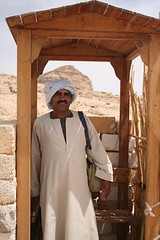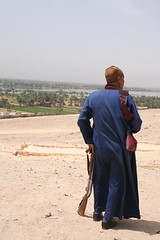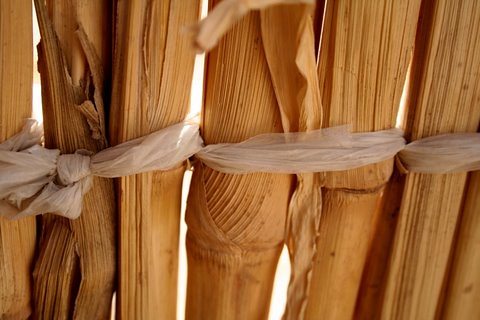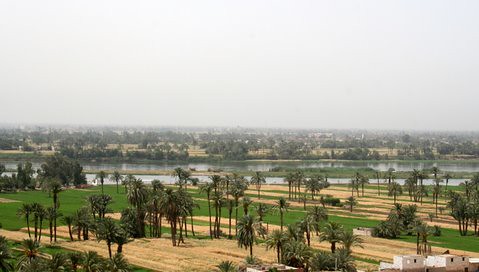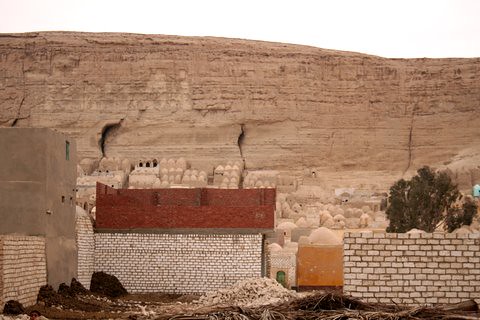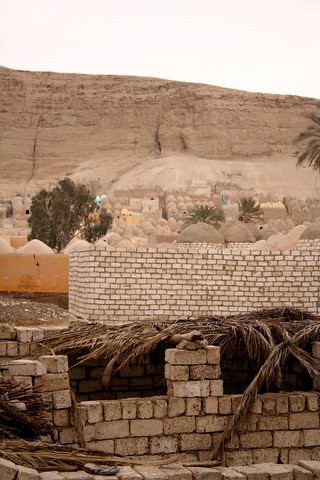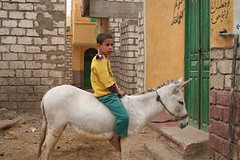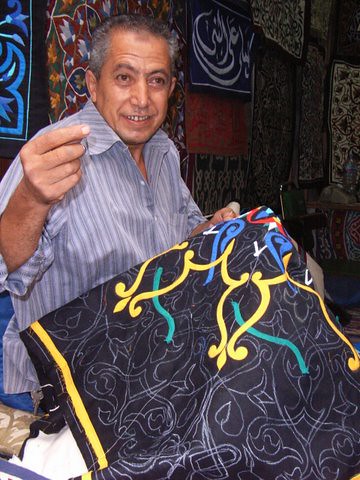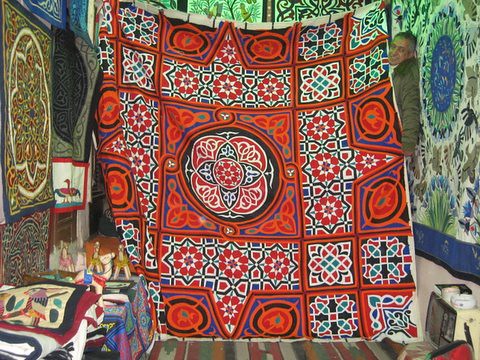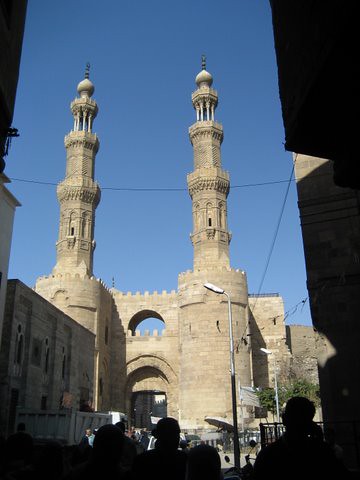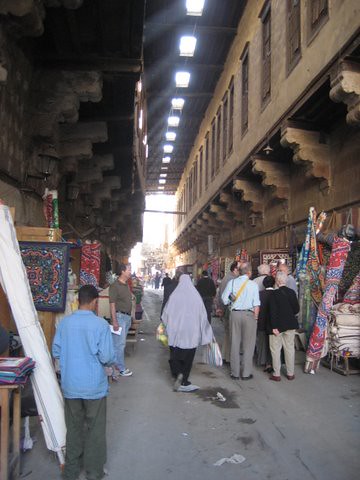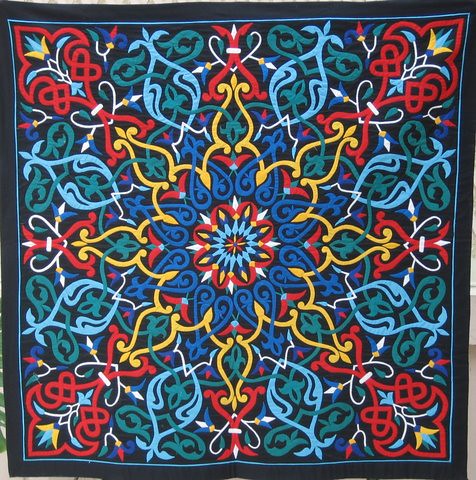In Egypt the Salt is in the Pepper Shaker
 Tuesday, April 24, 2007 at 01:54PM
Tuesday, April 24, 2007 at 01:54PM This is one of those small things that is a constant and irritating reminder that the culture is different.
Butter here is always unsalted. It is odd for me - like eating unsweetened whipped cream on bread rolls and it is strangely tasteless. In some ways it is just as well as it means I am much less tempted to eat butter. In other ways - I miss the simplicity of fresh brown bread and smooth cool butter.
In Minia I had absent-mindedly reached for the salt to add just a sprinkle to the butter on my roll. It was late and we were hungry and lunch seemed a long time coming. The pepper was not so much a surprise as 'why did I forget AGAIN?'
We were in Minia on Sunday and Monday. In Egypt these are the first two days of the working week - and that is another constant reminder that I am not in Australia. It can be an advantage as when daylight saving works in our favour I can catch people in offices in Australia on a day that is our weekend.
We went to Minia for a conference at the University and so that Bob could meet local officials. We drove down the road to Fayoum Oasis. This road parallels the road that goes past the pyramids which goes all the way from Giza to Sakkara, to Dashour, then weaves through a dozen tiny townships past crowded but poor vegetable markets and small barefooted children, and past Meidum and a couple of other mud-brick pyramids (once stone clad) whose names I can never remember. The road past the pyramids runs through farmland and there is a constant passing of green fields and date palms and people stripping date fronds for the wood in the centre, and the fronds for weaving. It is busy and entertaining. Overloaded donkeys sway past with fodder so wide that I think they should carry a 'wide load' sign. The areas with small towns are really worrying as children dart across the dirt roads with scant attention to traffic.
The road we traveled was so different it was almost bizarre to see the pyramids a few at a time as we moved along it. We were surrounded by quite featureless desert. It might have been boring but I love its pale gravelly expanses. It stretches like a pale sea as far as the very distant horizons, and with now and again a long finger of sand dune, shining golden against it. We had an odd grey sky - and it has been with us for days, even in our weekend trip to the White Desert. The pale caramel of the desert, light yellow ochre of sand, and the cool and blued-grey sky were like washes in the palest of neutral watercolours.
We picked up a police escort at the last checkpoint about twenty-five kilometres before Minia. We were obviously expected. As we pulled in they came to ask us who we were, and at the answer a good looking young man in khaki and breeches swung himself onto a police motor bike and wheeled out in front of us, then a navy blue police vehicle pulled out behind us.
We proceeded in a police sandwich to Minia. Occasionally the motorcyclist waved trucks to the side of the road to let us through. It slowed us down a little but I am still childish enough to find it exciting.
We went first to the hotel. They sat us down, took our passports and gave us the usual glass of cold khakadeh. This is delicious, and tastes like cold plum juice. While I know it supposed to be hibiscus I have seen the flower growing and the plant, and the flowers are thick and fleshy - unlike any hibiscus I have seen.
We waited a while, then a bit longer and started to feel as if something was wrong. Bob went to the desk to check and after a little shuffling they admitted that our rooms were not ready. It was only eleven o'clock and there was a gentlemen there from the tourist office waiting to take us to see tombs - so we decided to see tombs first and come back to our rooms.
Minia is often called the Bride of Upper Egypt. I am not sure why. It is a nice enough town, though obviously mostly agricultural and very poor. It has a quite lovely Corniche along the River Nile, and this has been developed with garden and park areas.
It was hot. By the time we walked out of the hotel to go to the tombs of Beni Hassan it was over 39 Celsius and the thermometer on the car climbed as we watched. We were following one of the canals south - towards Upper Egypt which I always think is confusing. At one point we passed a Coptic cemetery and a huge church, then the Moslem cemetery - which was really fascinating. Each tomb had a beehive dome on top - and they were big. They looked like houses in the north of Syria. They nestled close together and packed tight all the way back to the distant hills - and we followed them for miles!
I was agonising for a photograph or two. Did I mention that we still had a police bike in front and a chase car behind? Photography was obviously impossible as the bike woudl have shot ahead and the chase car might well have run into us. I had to watch one brilliant photograph after another slide by. Large groups of girls wore brilliant floral dresses in orange and purple and yellow and blue and jade, and the wind whipped their bright scarves like hair around their heads. Small boys with bare legs sticking straight out horizontally rode white donkeys. Women in headscarves leant on their hands and stared out the windows at our cavalcade. I had to resist an impulse to wave like the queen.
In watching the tombs I had not been watching the thermometer. When we pulled up in front of Beni Hassan it was up to 43 degrees Celcius. We stepped out of the airconditioning into a wall of heat.
A brief stop for a coke saw the temperature climb even higher. According to our driver it was almost 46 Celsius (or 114.8 Fahrenheit for my American friends) by the time we walked out of the back of the building to start the walk up to the tombs. I was a bit horrified. I had caught a few glimpses of stone cut tombs as we approached that area - and I knew they were high. I had hoped that there were even better low ones which we were going to - but no such luck. A wide and attractive staircase climbed inexorably up the hill behind, totally exposed to the full blast of the midday sun. Up and up and up. One of the guides proudly told me that there were 242 stairs and that he had to go up every day. He said the ramp was easier so I tried the ramp. This was not a 'made' ramp - but a slope of gravelly sand and I was sliding back a few centimetres at each step. I was sweating and uncomfortable and decided that the stairs might be easier.
I gave up at the half way point. The group was all men. Their legs were longer, most were younger and all were fitter. I might have done it at 20 degrees. I might have done it a bit more slowly - but with rapidly striding, long legged, healthy, slim, young Egyptians - there was no way.
I told Bob I was pulling out and would wait on the benches at the half way point. One of the police in khaki suggested that I wait in the guards' box and they would look after me.
I moved up the gravel slope to the guards' box and was ushered in to sit down. It was much cooler as it was shaded by a roof made of dried cornstalks and they whispered in the breeze that was caressing the hill. The two guards took up stances leaning on their guns on either side of me and I felt as if I had been stuck in a pillbox outside Buckingham Palace.
It felt ridiculous, but it didn't last long. I was now occupying their only shade. One side and the back were made of badly fitted stone rectangles with enough gap to let a lot of light through. The roof and other side were corn stalks, carefully tied together with plastic bags twisted into ropes.
The box was small. If I had asked them in I would have to be prepared for a much more intimate relationship than was appropriate. Slowly they drifted back into the small amount of shadow cast by the stone side of the hut. They were chatting in a desultory way, and I had taken photographs of the river and river flats from above, and of the line of thirty nine tombs above me.
I was amusing myself looking at the bits of view framed between the big cracks between the stones. I looked through a vertical crack with framed date palms, a horizontal crack to a view over the canefields, horizontal again - what was I looking at? It was part of one of the men - but it took me a surprised second to realise I was looking straight into two eyes which were widening in horror as they looked back.
I burst out laughing and the owner of the eyes responded with howls of glee and relief. There was a prolonged explanation to the older man. I started to chat to them and asked questions about the things we could see. We discussed the sugar factory and the part sugar plays in the lives of Egyptians, and the village that was flattened by Mohamed Ali in the Ottoman period.
Bob returned and after another stop in the rest house we left. This time I had asked if I could have photographs and so we were all - all police and Bob and our driver - watching for the perfect view of the cemetery through the cracks between the houses, preferably at a point where the wall was low.
I spotted a possible place and our driver swerved to the side. The bike in front swirled around and came back. the chase car pulled in tightly behind us and four men got out with guns. I picked my way through the rubble at the side of the road to a vantage point (we had overshot just a tad) and tried to set up a photograph. To my horror I realised that I was surrounded by police and curious villagers. I took two quick shots in hope that they would give some impression of the cemetery. A little further on I repeated the exercise and included a small boy on a beautifully clipped donkey - but it was just so much trouble and we were attracting so much attention that that was all I took of a place I could have wandered for days!
